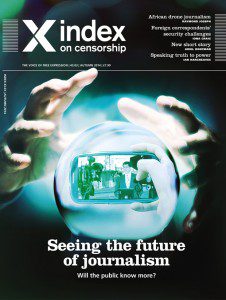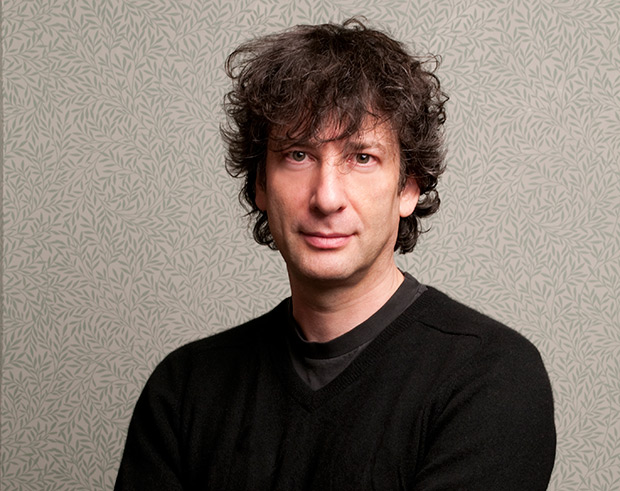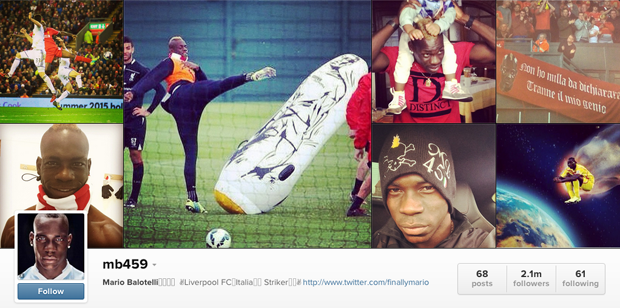15 Dec 2014 | ArtFreedomWales, News, United Kingdom
Index on Censorship has been exploring artistic freedom of expression and contemporary forms of censorship in the UK. Who or what controls what is sayable in the arts? Who has a voice in the arts? Do the answers vary as we move around the different member nations of the UK?
Looking at our culture through the prism of artistic freedom of expression opens up questions about the power relations between artists, venues, audiences, the police, the media and community interest.
Our initial case study Beyond Belief – theatre, freedom of expression and the police offered insight into how these relationships are often played out in the present day. Deepening our exploration, conferences in London in 2013 and Belfast in early 2014, have been followed by a programme of work in Wales in the latter half of this year. Art Freedom Wales was Index’s exploration of whether Wales is enjoying its right to artistic free expression.
Across all three projects, it is becoming clear there are massive pressures on what is sayable in the arts–rifts around what is acceptable to funders, to the audience, to public opinion, or even health and safety. It is also clear that there are significant questions around the issue of access to artistic expression–for established and aspiring artists, as well as the public at large. Events this past summer at the Barbican around Brett Bailey’s Exhibit B have underlined recurring questions around the role of the police and the media in shaping what gets to be seen.
In 2015, Index is planning to explore the state of artistic freedom in Scotland before holding a state of the nations event which will bring together key players to discuss how to reinforce support for artistic expression across the UK.
ArtFreedomWales
Over the past few months Index’s project ArtFreedomWales has hosted a series of online discussions with artists from across Wales–established artists, emerging artists and artists working in Welsh. You can catch up with everything that’s been said here.
These discussions, and the issues they raised, informed our approach to a Free Speech Hearing in Cardiff on 27 November. As a culmination of the project, the hearing invited practitioners from across art forms alongside policy makers and cultural gatekeepers to come together to discuss the question “Is Wales enjoying its right to freedom of artistic expression?”
To open the hearing, Index invited Turkish playwright Meltem Arikan, an established artist, with direct experience of censorship who is now living in exile in Wales, to survey the Welsh arts scene from the eye of an outsider.
This was followed with an array of evidence volunteered from across Wales, short presentations surfacing a number of topics from offence to rumour, and self-censorship to cultural education.
Moving from the stage to discussion between peers, major themes and concerns were examined in more detail in breakout sessions.
Finally, a panel discussion featuring Dai Smith (Arts Council Wales), John McGrath (National Theatre Wales), David Anderson (Museums Wales), Lleucu Siencyn (Literature Wales) and Elen ap Robert (Pontio) asked how leading organisations in Wales might take on some of the issues raised during the afternoon?
This article was posted on Dec 10, 2014 at indexoncensorship.org
11 Dec 2014 | Magazine, Volume 43.03 Autumn 2014

Index on Censorship autumn magazine
In September, Index on Censorship magazine launched a social media campaign which invited its readers to nominate a place which was symbolic of either free speech or censorship, with the winning locations being granted free access to the magazine app for one year.
Nominations came from all over the world and the winning places are Maiden Square in Ukraine, Gezi Park in Turkey and Wigan Pier in the north of England.
You can access the app on iPhone or iPad until 1 September 2015 at any of the three locations listed, by following these steps:
1) Visit the app store or iTunes, searching “Index on Censorship”
2) Download the FREE Index on Censorship app
3) Scroll through the issue to the final page, selecting “Tell me more”
4) Turn the “ByPlace” switch to the right
5) Click OK to activate
See some of the nominations Index magazine received in our Storify below.
For more information on subscribing to Index, click here.
11 Dec 2014 | Magazine, News, Religion and Culture, Volume 43.04 Winter 2014

Neil Gaiman (Photo: Kimberly Butler)
In the next issue of Index on Censorship magazine, fantasy writer Neil Gaiman is interviewed by political cartoonist Martin Rowson about censorship, offence and how graphic novels stir controversy. You can listen to the highlights here and read the full story by subscribing or downloading the app (£1.79 on iTunes).
The interview sees them discussing Dr Who as any example of why we shouldn’t protect children from everything that might scare them; how the Hilary Mantel scandal is keeping the short story alive, and how the Comic Book Legal Defense Fund is fighting a never-ending battle. “Comics, because of the capacity of offence that an image can give, will always have one foot in the gutter,” says Gaiman.
Gaiman also opens up about the only time he had to abort collaboration with an artist (“I think that was the only time I’ve looked at something and said: ‘That’s too disturbing.’”) and on the backlash he received from penning the first transsexual character in a mainstream comic (first from Concerned Mothers of America, later from trans activists).
This article is from the upcoming winter edition of Index on Censorship magazine. Subscribe to Index on Censorship magazine by Dec 31, 2014 for 25% off a print subscription.
This article was posted on December 11, 2014 at indexoncensorship.org and is part of the winter 2014 edition of Index on Censorship magazine.
11 Dec 2014 | Europe and Central Asia, News, United Kingdom
I feel sorry for Mario Balotelli. I’m sure he’ll take that as a comfort; knowing he’s not the only one asking “why always Mario?” That is not to say I think he’s drifted through life blameless and immaculate: not at all. I’ve only seen him in the flesh once, when Manchester City played Arsenal. He had a terrible game and got sent off for what even I, sitting in row Z at the other end of the ground, could see was a stupid and dangerous tackle.
But I’ve had a soft spot for Balotelli ever since someone pointed out he looks like a baby dinosaur. Without wishing to infantilise him, he’s like the boy in school who can’t help getting in trouble even when he’s trying to be good. Ballotelli’s current situation is the perfect example. Last week, the player posted an image on Instagram, showing Nintendo character Super Mario (from whom the footballer takes his nickname, or at least would like to).
“Don’t be racist!”, it read (Yay!)
“Be like Mario” (LOL!)
“He’s an Italian plumber” (indeed he is)
“created by Japanese people” (correct)
“who speaks English” (sort of)
“and looks like a Mexican” (I suppose he does. A bit.)
“…jumps like a black man” (hmmm)
“and grabs coins like a Jew” (oh)
Long story short: people suggested that this might be a bit racist towards black and Jewish people, Balotelli responded that his mum is Jewish. Eventually, he took the post down and apologised. But by then it was too late. The Football Association announced over the weekend that the striker would face an investigation for using insulting and improper language with “reference to ethnic origin and/or colour and/or race and/or nationality and/or religion or belief”.
For what it’s worth, I don’t believe for a moment that Balotelli meant to insult anyone with his Instagram post. I think he entirely sincerely posted the meme seeing it as an anti-racist message. The problem for poor Mario was that his ill-judged but innocent Instagram came while the football world was actually paying attention to anti-semitism, as Wigan chairman Dave Whelan spouted a series of inappropriate race-related comments (Jews, money, you know, that stuff) after hiring former Cardiff manager Malky Mackay, who himself had run into controversy over dubious texts (Jews, money, on and on it goes).
Whelan stylishly compounded the issue with a “clarifying” interview in the Jewish Telegraph, where he spun the ”some of my best friends are…” line, saying there must be “a dozen” Jews with apartments near his residence in Majorca, and “so many Jewish people go to Barbados at Christmas. That’s when I go. I see a lot of them in the Lone Star, in restaurants. I play golf with a few of them.”
In the same interview, Whelan told how when he was younger, people called the only Chinese restaurant in Wigan “the Chingalings”, and absolutely nobody had minded (though one doubts anyone asked the Chinese people of Wigan).
Whelan now also faces charges of misconduct from the FA. I’m not about to suggest that the FA has no right to investigate Whelan, or anyone involved in professional football in England. Associations can have their own rules and standards. But it would be sad if, in football’s newfound determination to deal with discrimination, innocents such as Balotelli got caught in the dragnet.
The interesting question is whether, in combating racism, one confronts the words used, the stereotypes invoked, the intent behind them, or all three at once. Is it possible to disentangle the three?
Nowhere is this more clearly illustrated than the debate about whether Tottenham Hotspur fans should be able to chant “yids” or not. Short explanation: some Spurs fans are Jewish, many identify as the “yid army”. Some people — mostly not Spurs fans — feel that Spurs fans chanting “yids” legitimises anti-semitic chanting by fans of other teams. Spurs fans say it’s their chant and their word and they are using it positively. Unpick that one, sports fans.
Words in and of themselves are neutral entities. Does saying the word “yid” — in and of itself — make me more or less anti-semitic? No. But the creation of a taboo can elevate a word, bringing a certain thrill to its use. In a society where, more or less, we have decided bigotry is a bad thing (which is not to suggest a society where bigotry is no longer a problem), the use of words and phrases associated with bigotry can take on a thrill of its own, as much for the well intentioned as for the malevolent. The bad taste joke, the inappropriate interjection, the drunken football chant using the words you might not be supposed to use, are the shared cigarette behind the school bike shed; the shared, line-crossing moments that so often bond people.
The joy for most Unilad Bantalopes lies in that shared bond. For the person who created the meme which ill-feted Mario Balotelli shared (very much from the Bantasauraus school), one could simultaneously attempt to be anti-racist and use racial stereotypes. Human beings are complicated like that. And that’s why a zero-tolerance approach to words and meanings is unlikely to work on us.
This article was posted on 11 December 2014 at indexoncensorship



